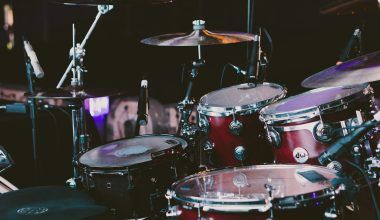The world of music is ever-evolving, and with technological advancements, the instruments we use to create sound are no exception. Traditional instruments like guitars, pianos, and violins have shaped music for centuries. However, the rise of new music instruments has redefined how artists produce and perform music today.
In this blog, we’ll explore the latest innovations in musical instruments, from digital tools to futuristic hybrids, and how they are changing the music landscape.
Why Do We Need New Music Instruments?
Music is about creativity and expression. While traditional instruments provide a solid foundation, new instruments offer:
- Expanded Sound Capabilities: Unique tones and textures not possible with traditional tools.
- Technological Integration: Seamless compatibility with digital music production software.
- Accessibility: Instruments designed to be more user-friendly for beginners and inclusive for people with disabilities.
- Inspiration: New tools encourage artists to experiment and push boundaries.
Highlights of New Music Instruments
Let’s dive into some of the most groundbreaking innovations in musical instruments:
1. Seaboard by ROLI
The Seaboard is a revolutionary take on the traditional keyboard. Its soft, touch-responsive surface allows musicians to bend, slide, and shape notes in ways that are impossible with a standard piano.
- Features:
- Continuous touch for expressive sound modulation.
- Compatible with popular DAWs (Digital Audio Workstations).
- Compact and portable.
2. Artiphon INSTRUMENT 1
The Artiphon INSTRUMENT 1 is an all-in-one instrument that lets you play piano, guitar, drums, and more. Its versatility makes it perfect for producers and live performers alike.
- Features:
- Multiple play modes (strumming, tapping, bowing).
- MIDI support for integration with music software.
- Lightweight and portable.
3. Electronic Wind Instrument (EWI)
The EWI combines the mechanics of a traditional wind instrument with the flexibility of electronic sound production. It’s popular among jazz and electronic music artists.
- Features:
- Wide range of tones and settings.
- Compatible with synths and DAWs.
- Mimics the feel of traditional wind instruments.
4. AlphaSphere
This spherical instrument is designed for intuitive and expressive play. With pressure-sensitive pads, the AlphaSphere allows users to create layered and dynamic performances.
- Features:
- 3D playing surface for immersive interaction.
- MIDI and OSC compatibility.
- Ideal for electronic and experimental music.
How New Music Instruments Are Transforming Music Production
1. Integration with Technology
Modern instruments are designed to work seamlessly with computers, tablets, and smartphones. Artists can now use these instruments alongside music production software, enabling greater creative control.
2. Accessibility and Inclusivity
Many new instruments are designed to be easier to learn and play. Tools like the Orba by Artiphon and Joué Board allow beginners to create music without years of training.
3. Expanding Genres
New instruments are leading to the creation of entirely new genres. For example:
- The use of MIDI controllers has fueled the growth of electronic and EDM music.
- Instruments like the E-Drum Pads have revolutionized percussion in live and studio settings.
Top Platforms to Discover New Music Instruments
If you’re looking to explore and purchase the latest music instruments, check out these platforms:
- ROLI: Known for their innovative Seaboard and Lightpad Block.
- Artiphon: Makers of the INSTRUMENT 1 and Orba.
- Native Instruments: A hub for MIDI controllers and music production tools.
- Teenage Engineering: Known for portable synthesizers and quirky designs.
The Role of AI in New Music Instruments
Artificial Intelligence is playing a significant role in shaping the future of music instruments. AI-driven tools like Endlesss and AIVA allow musicians to compose, remix, and perform in real-time with the help of machine learning.
These instruments:
- Suggest harmonies and melodies.
- Adapt to a musician’s playing style.
- Generate music independently for collaborative projects.
Sustainability in New Instrument Design
Eco-friendly materials and designs are becoming a focus in the creation of new instruments. Brands are exploring sustainable materials like bamboo, recycled plastics, and biodegradable components to reduce their carbon footprint.
The Future of New Music Instruments
With rapid advancements in technology, the future of musical instruments looks incredibly exciting. Here’s what we can expect:
- Holographic Instruments: Virtual interfaces for interactive music creation.
- Wearable Instruments: Devices that let you play music through movement.
- Brain-Music Interfaces: Instruments controlled by brainwaves.
How to Start Using New Music Instruments
- Research: Learn about the instrument’s features and how it fits into your music style.
- Experiment: Try demo versions or watch tutorials to understand the basics.
- Collaborate: Work with other musicians to explore its full potential.
- Practice: Dedicate time to mastering the instrument for live or studio use.
Final Thoughts
The rise of new music instruments is transforming how we create and experience music. From hybrid keyboards to AI-driven tools, these innovations are breaking boundaries and redefining artistic expression.
Whether you’re a seasoned musician or a curious beginner, now is the perfect time to explore these groundbreaking instruments. They’re not just tools—they’re gateways to a new world of sound. Let your creativity soar.
Related Articles:
For further reading, explore these related articles:
- Discover the Best Cheap Musical Instruments for Beginners
- Mini Musical Instruments: A Comprehensive Guide to Tiny Tunes
For additional resources on music marketing and distribution, visit Deliver My Tune.






